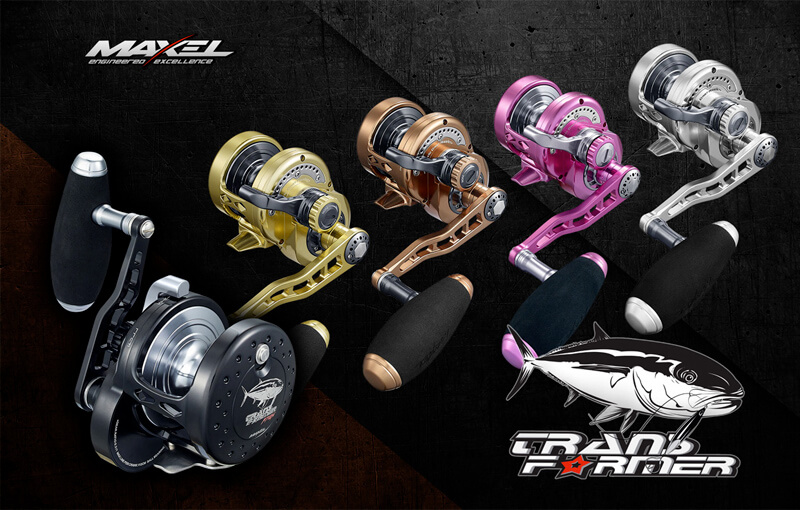
He also says he prefers a taller, narrow-spool reel because it gives you a more consistent rate of retrieve. You want a jigging reel to be machined with tight tolerances: “no back play or handle slop,” as Ortiz puts it. Performance differences between the two types of reels aside, cost can be a factor, Wong says: “It’s a fact that a premium spinning reel will cost more than a premium twin-drag conventional.”

(In speed jigging, the angler relies heavily on the rod to tire the fish.) Chua says drag is particularly important with slow-pitch jigging because when hooked up, the reel tends to do most of the work. But for bigger game, 25 to 50 or more pounds of maximum drag will help win battles. For smaller fish, most good reels of any type are likely to suffice. If you intend to use a rig for dropping into really deep water, you’ll want to go conventional because many hold far more line for their size than spinners.Ĭlearly how much available drag a jig angler needs has much to do with his quarry. But Ortiz does caution against “sacrificing strength for light weight,” which in part is where the quality of the reel comes into play.

Now, he says, he can jig 800 feet of water with a tiny lever drag weighing about 15 ounces. “Over 25 ounces, and it is too much.” He cites a time not so long ago when jig anglers had to rely on reels weighing 30 to 40 ounces (which in case your math isn’t so good, means a couple of pounds or more). “Once you’re over 20 ounces a reel, it gets to be a bit much,” Benny Ortiz says. The trend toward smaller reels for jigging has produced some remarkably compact conventional reels capable of holding plenty of surprisingly heavy line (it’s far more difficult to radically downsize spinners without losing key performance parameters). Jigging requires endlessly lifting reel and rod repetitively lighter reels are a huge plus. Some slow-pitchers will go considerably lighter, seeking the thinnest braids they can find, to get jigs very deep-more than 2,000 feet for some Japanese experts, Wong says. Slow-pitch enthusiasts require lighter lines, often in the 20- to 40-pound range. Slow-pitch -jigging involves considerably more finesse these jigs are moved with a quick upward lift, then allowed to drop a short distance as they take up the slack line created by the lift. Speed jigging generally relies on longer, thinner “knife” jigs that are worked upward with a rapid, rhythmic cadence. The difference, in brief, is critical because each method requires different gear. As a sport, jigging is a niche within the niche of saltwater fishing, and it has generated a range of reels and rods made especially for fishing jigs.īut all jigging tackle is not created equal: There’s gear made for speed jigging and for slow-pitch jigging. At the same time, with manufacturers making better and better gear, jigging seems to make commensurate gains in popularity. Thus, with jigging gaining in worldwide interest and popularity, tackle manufacturers make better and better jigging gear.

In the yin and yang of tackle design, the development of specialized gear can be circular.

The right tackle helps produce strikes from and land trophies like this enormous wreckfish, taken off New Zealand’s Three Kings on a 500-gram Broken Arrow jig. IT'S THE ORIGINAL ONE FROM MAXEL FISHING TACKLE.Jigging can be a spectacularly effective technique. Specialize in reels design for Deep Water Jigging, for fishermen who take their sport very seriously.ĪTTENTION: OUR MAXEL'S REEL ARE NOT FROM MAXEL USA. All products have enjoyed the reputation of being "Superior" to our jigging reels for customers in all corners of the globe. A long experience in producing aluminum parts for some of the biggest names in fishing has honed our manufacturing skills and expertise in unequaled fashion. Maxel manufacture high-quality big game trolling and deep water jigging reels since 2003.
MAXEL TRANSFORMER REEL REVIEW FREE
In addition, the free spool has no resistance on the fishing line, bottom detection is much easier. As the reel is placed overhead on the rod, it's greatly facilitating jigging moves, allowing larger movement, also avoids bumping the reel on the edge of the boat. This reel is a little more complicated to use than a spinning reel, but they have advantages that outperform spinning reels. When you need a reel with large capacity, good drag, nothing compares to conventional reels.


 0 kommentar(er)
0 kommentar(er)
